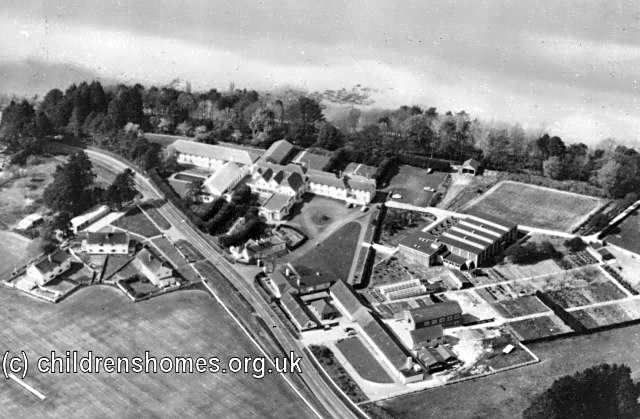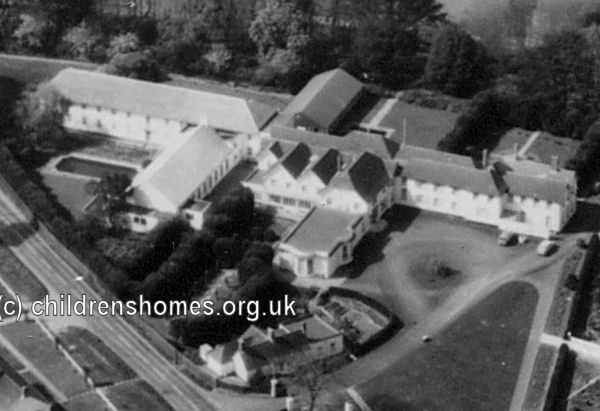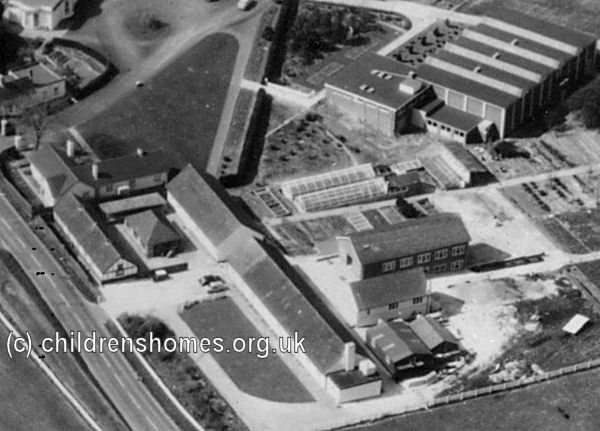St Swithin' Nautical School, Yarmouth, Isle of Wight
On 23rd June, 1947, St Swithin' Nautical School for Roman Catholic Boys was formally certified to operate as an Approved School in premises at Eastmore House, Yarmouth, Isle of Wight. The School had previously been based at Wootton St Lawrence, near Basingstoke.
St Swithin's could accommodate up to 88 Senior Boys aged between their 15th and 17th birthdays at their date of admission. The establishment was run by the Brothers of the Christian Schools (the De La Salle Brothers). In addition to training in seamanship, the boys were also taught joinery and gardening.

Aerial view of St Swithin' Nautical School, Yarmouth. © Peter Higginbotham

Aerial view of St Swithin' Nautical School, Yarmouth. © Peter Higginbotham

Aerial view of St Swithin' Nautical School, Yarmouth. © Peter Higginbotham
In 1968, St Swithin's became embroiled in a scandal after a former instructor in the nautical department at the School, William Williams, made accusations in the Daily Mail of excessive canings and other brutality by staff there. Amongst Williams' claims were that a boy had been beaten up by a master and his hearing had been affected for two weeks. Another boy, in poor physical condition, had been attacked and afterwards died in hospital. An investigation by a joint committee of managers and inspectors found that most of his allegations to be unproven but accepted that on two occasions, excessively severe punishments had been administered. The practice of making the boys wear drill shorts for caning had also been irregular. The headmaster, Brother Cassian, was said to have been aware of all these matters. In view of headmaster's long service and impending retirement, the Home Secretary proposed that the matter be dealt with by bringing forward his retirement. The School's other teachers rallied behind the headmaster, who was also received support from residents in the area in the form of a 3,000 name petition demanding his reinstatement — it was said locally that there had been very few abscondments since he had been there, and that people felt safe in their homes. Brother Cassian was also well known for his interest in amateur boxing and was a popular referee.
In 1973, the School became Eastmore House Community Home with Education (CHE) under the control of Hampshire County Council.
The School closed in the 1980s and the surviving buildings have now been converted to residential use.
Records
Note: many repositories impose a closure period of up to 100 years for records identifying individuals. Before travelling a long distance, always check that the records you want to consult will be available.
- De La Salle Provincialate, 140 Banbury Road, Oxford OX2 7BP.
Bibliography
- Higginbotham, Peter Children's Homes: A History of Institutional Care for Britain's Young (2017, Pen & Sword)
- Hyland,Jim Yesterday's Answers: Yesterday's Answers: Development and Decline of Schools for Young Offenders (1993, Whiting and Birch)
- Millham, S, Bullock, R, and Cherrett, P After Grace — Teeth: a comparative study of the residential experience of boys in Approved Schools (1975, Chaucer Publishing)
Links
- The Therapeutic Care Journal — has a number of articles relating to Approved Schools.
Except where indicated, this page () © Peter Higginbotham. Contents may not be reproduced without permission.


